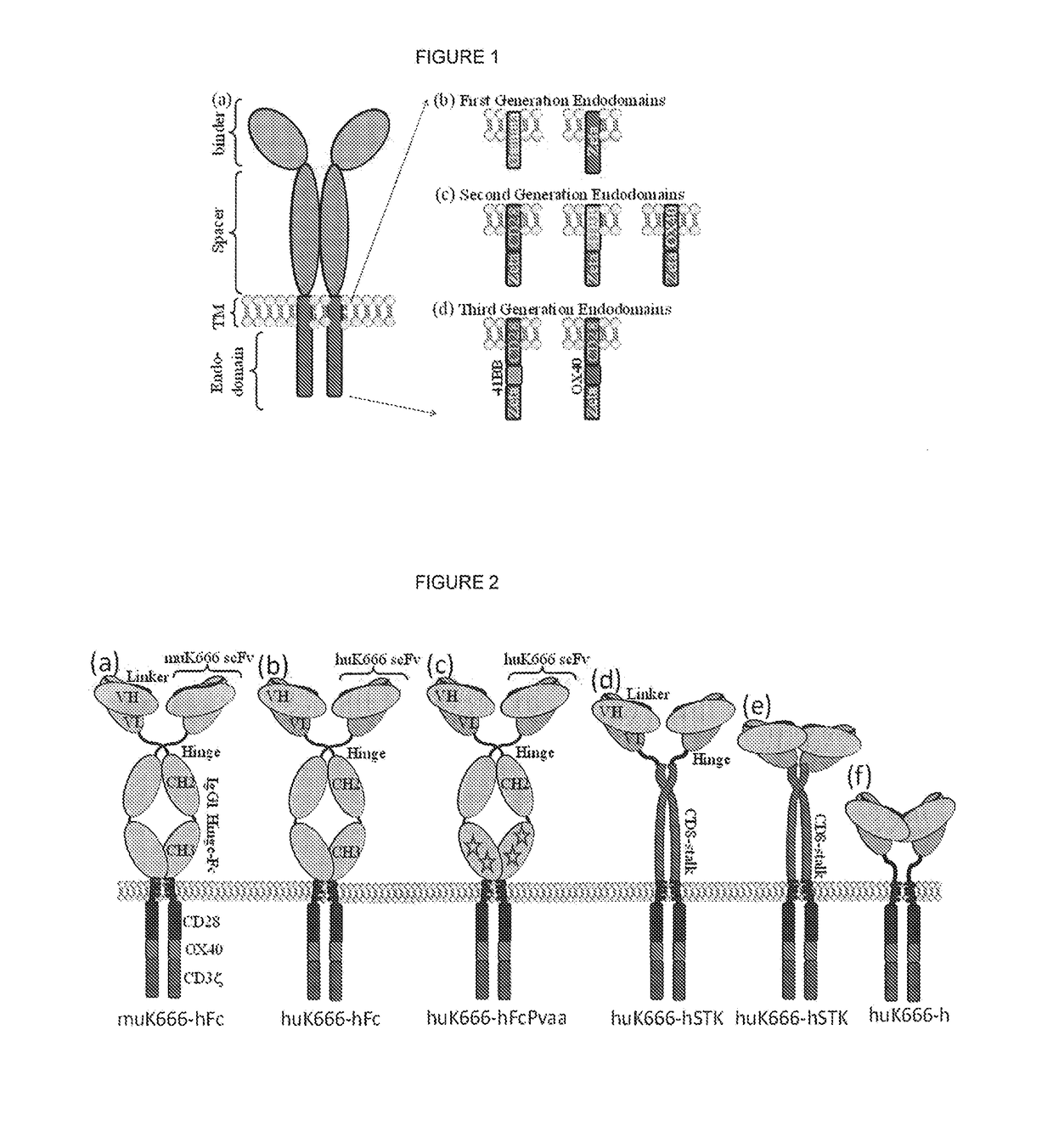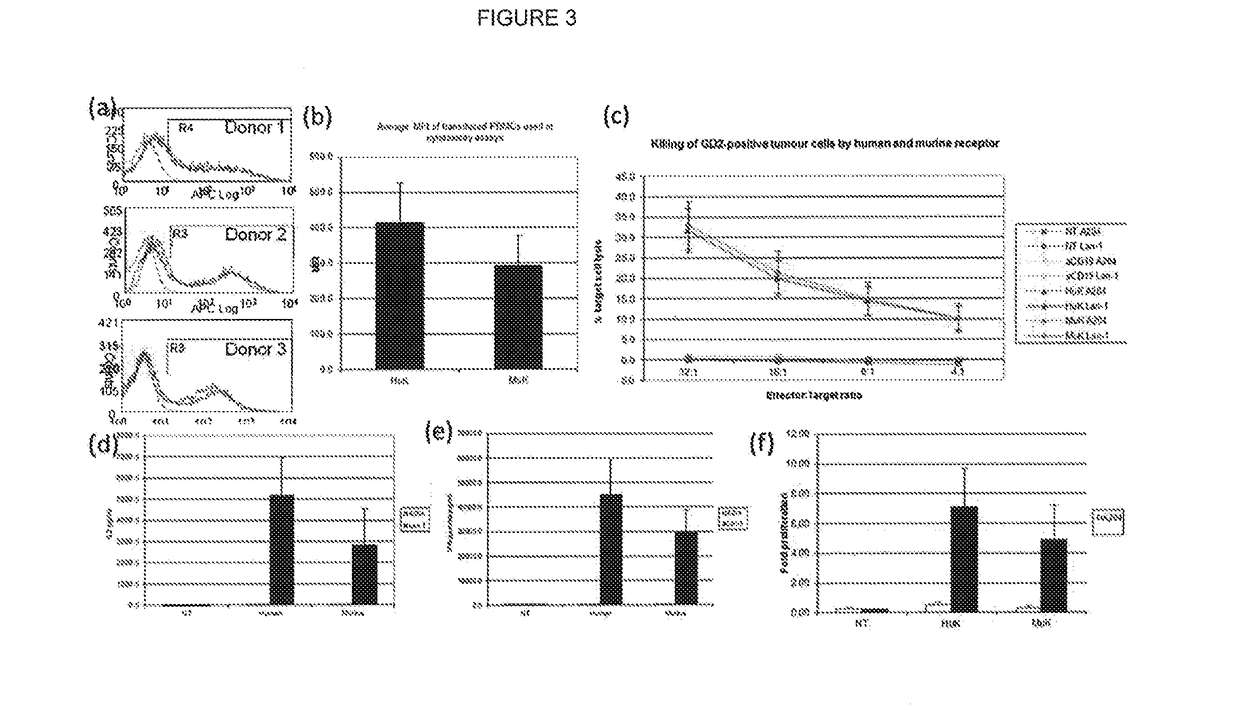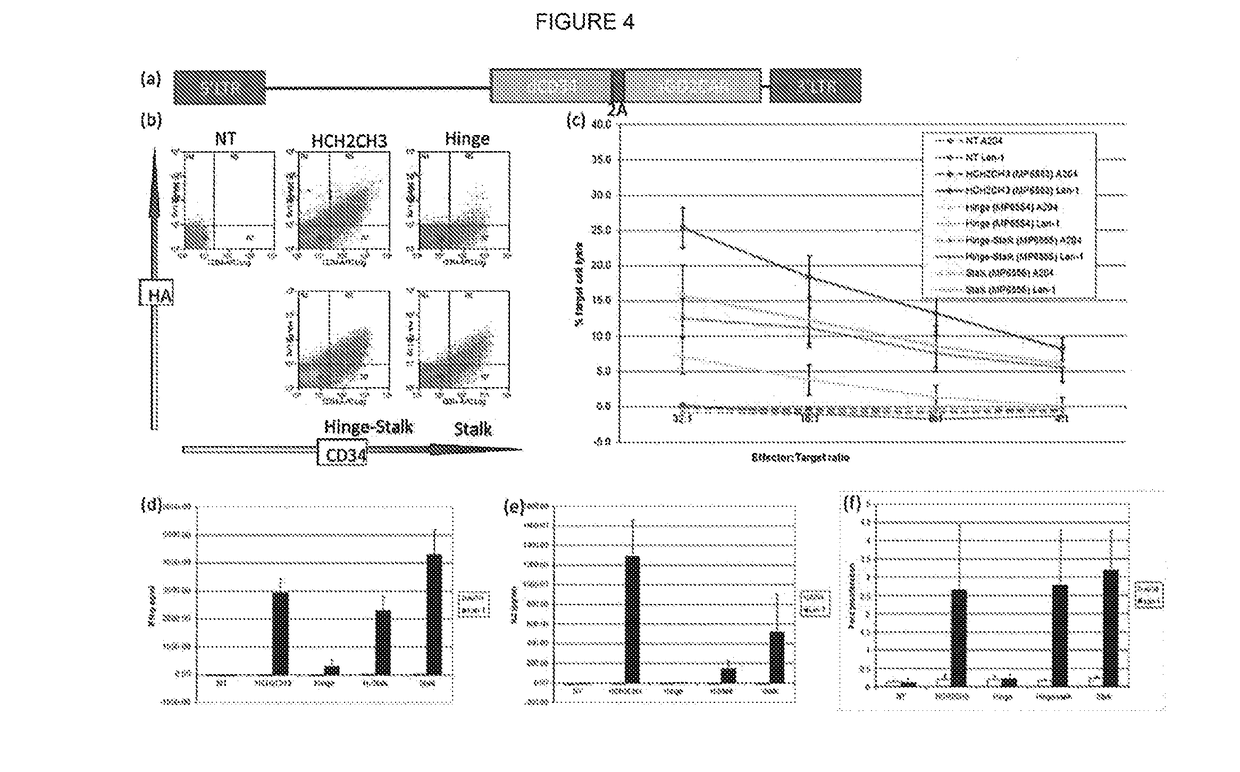Chimeric antigen receptor
a technology of chimeric antigen and receptor, which is applied in the direction of immunoglobulins, peptides, drugs against animals/humans, etc., can solve the problems of limited sustained complete remission, no anti-bulky disease, and toxic agents
- Summary
- Abstract
- Description
- Claims
- Application Information
AI Technical Summary
Benefits of technology
Problems solved by technology
Method used
Image
Examples
example 1
Using the Humanized Antibody huK666 as a Binder
[0153]CARs were constructed with scFvs using sequences from either the mouse antibody KM666 or its humanized version huK666 as described by Nakamura et al (2001—as above) (variants (a) and (b) in FIG. 2 above). These receptors were compared for expression / stability and found to be equal for both receptors. Next, killing, cytokine release and proliferation of T-cells transduced with these receptors were tested when challenged by target cells either not expressing or expressing GD2. It was concluded that killing of both receptors was similar, but the humanized scFv based receptor resulted in superior IL2 production and proliferation (FIG. 3).
example 2
Testing the Effect of Different Spacer Formats Effects on Expression and Function
[0154]Anti-GD2 CARs with Fc spacer, Hinge, Hinge-CD8 stalk and Cd8 stalk were generated (FIG. 2(b), (d), (e) and (f) respectively). These CARs were co-expressed with the marker gene, truncated CD34, in an obligate 1:1 fashion with the 2A foot-and-mouth self-cleaving peptide to allow accurate comparison (FIG. 4a). Further, the huK666 scFv was tagged with an aminoterminal HA tag to allow comparison of transgene versus CAR expression.
[0155]Flow cytometric analysis of normal donor T-cells transduced with these constructs demonstrated brighter CAR expression in the following order: Fc>Hinge-stalk=stalk>Hinge (FIG. 4b).
[0156]Killing of GD2 positive targets relative to GD2 negative targets was compared using chromium release assays. This showed killing effectiveness in the following order: Fc>Hinge-stalk=stalk>Hinge (FIG. 4c).
[0157]Interferon-gamma release and IL-2 release was compared when CAR T-cells were ch...
example 3
FcR Mutations Abrogate Non-Specific Activity
[0159]The overall data from the above Examples suggested that the Fc spacer performs best overall. However the Fc domain in vivo may lead to non-specific activation from cells which express Fc receptors. To abrogate this effect, mutations were introduced into the Fc region as shown in FIG. 5(a). These mutations had no deleterious effects on CAR expression, as shown in FIG. 5(b).
[0160]In addition, it was shown that these mutations had no effect on CAR killing function (FIG. 5(c)). Finally, it was shown that these mutations had the desired effect in terms of non-specific killing of FcR expressing targets (a monocytoid line called THP1), and IL-1 Beta release by these monocytes (FIG. 5e).
PUM
| Property | Measurement | Unit |
|---|---|---|
| width | aaaaa | aaaaa |
| nucleic acid sequence | aaaaa | aaaaa |
| nucleic acid | aaaaa | aaaaa |
Abstract
Description
Claims
Application Information
 Login to View More
Login to View More - R&D
- Intellectual Property
- Life Sciences
- Materials
- Tech Scout
- Unparalleled Data Quality
- Higher Quality Content
- 60% Fewer Hallucinations
Browse by: Latest US Patents, China's latest patents, Technical Efficacy Thesaurus, Application Domain, Technology Topic, Popular Technical Reports.
© 2025 PatSnap. All rights reserved.Legal|Privacy policy|Modern Slavery Act Transparency Statement|Sitemap|About US| Contact US: help@patsnap.com



